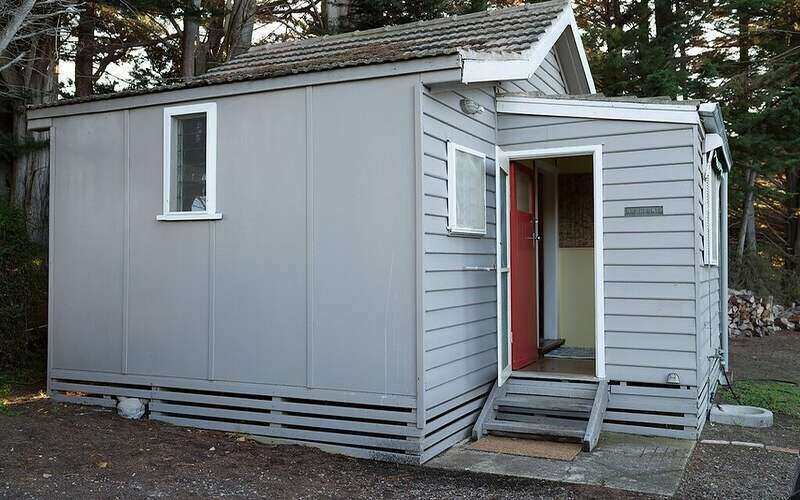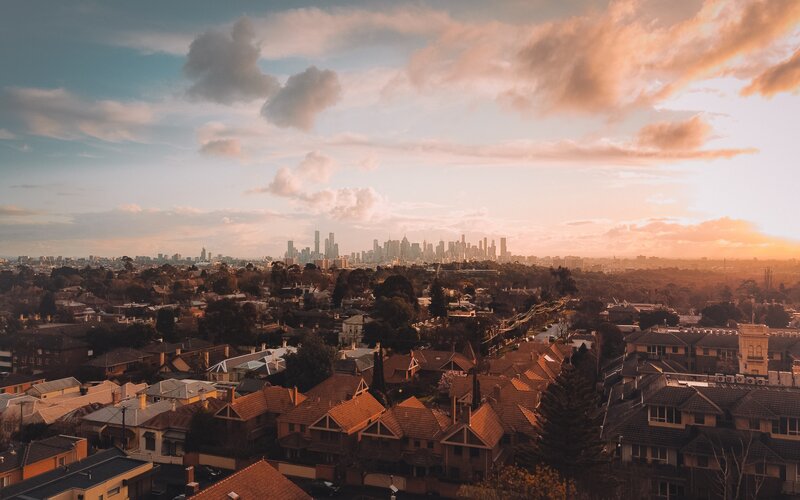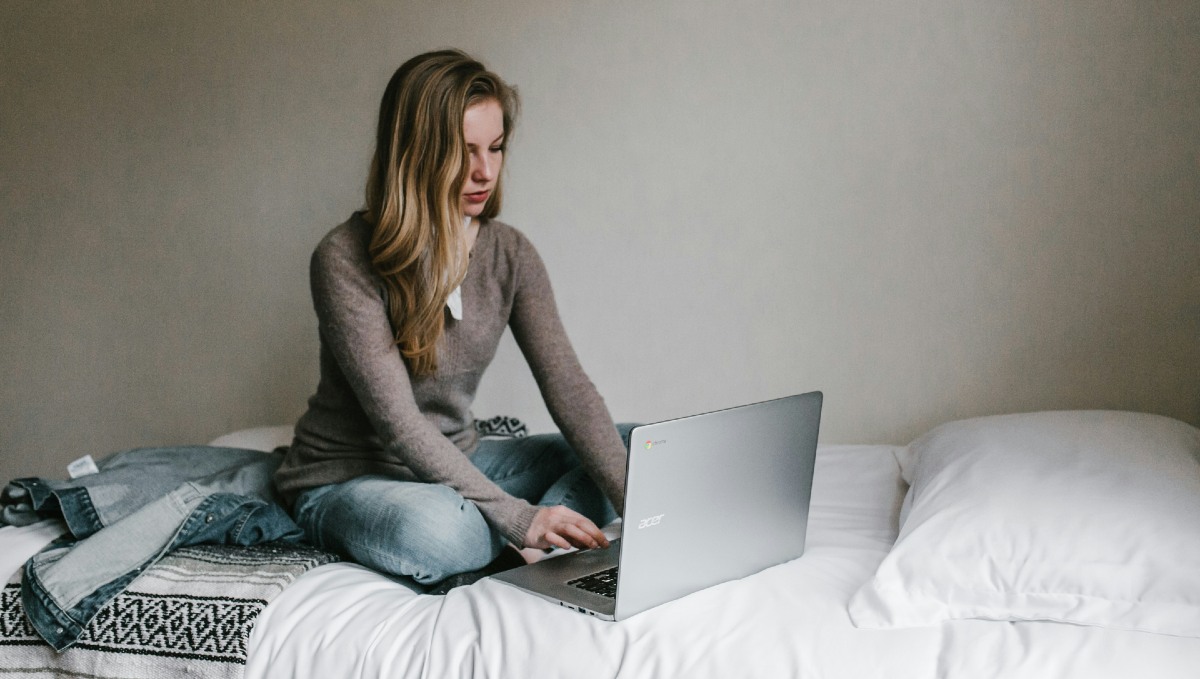Granny flats are a popular investment in Australia. Thousands of them are built every year in Australia, and analysis by CoreLogic and Archistar in 2019 revealed more than half a million homeowners across Australia are “sitting on a granny flat goldmine”, having enough land to build a granny flat on their property, which could boost the value of their home by 30% and add around 27% in rental income.
In addition to adding to the value of your property, a good granny flat could provide space for a loved one to live, such as an elderly relative or child who has moved back home, while also giving you space from each other.
What is a granny flat?
A granny flat is generally defined as a ”self-containing” housing unit located within a property’s boundaries that can operate as a dwelling for a single-family. They’re referred to as granny flats because they are often used to house an ageing parent, but they can also be used to house friends, immediate family members, distant cousins, or anyone really (this can differ depending on the state).
Granny flats can be custom-built or built as a part of a granny flat kit. They can be either separate from the main dwelling, or attached to it, such as being above a garage.
Why would you want to add a granny flat to your property?
There are essentially three main benefits to having a granny flat on your property:
-
You can increase the value of your property (although the opposite can also be true);
-
You can earn a rental income while also living in the main property; and
-
You can provide a place for a loved one to live if they need a place, or if you want them to be close while still maintaining your space
In a 2019 report, CoreLogic Head of Research Tim Lawless said granny flats are becoming an increasingly compelling option for homeowners in a lacklustre market.
“Not only can it help to manufacture new capital gains, but it has the potential to generate rental income while meeting demand for more affordable housing,” Mr Lawless said.
“Many properties identified as suitable for a granny flat are in densely populated and traditionally expensive areas, such as Sydney’s Northern Beaches or Hornsby. Homeowners could capitalise on the popularity of AirBnB and look at offering short-term accommodation to holidaymakers, or they could meet the demand for affordable housing by offering a long-term rental.”
Of course, there are potential downsides to having a granny flat too. They could be too expensive, not add enough value to the property when selling, and can come with some tricky regulations, although state governments have made some amendments to make building and owning granny flats easier in recent years.
The pros and cons of owning a granny flat can be seen below.
Pros and cons of having a granny flat
|
Pros |
Cons |
|---|---|
|
They can add value to your property |
They can be costly to build |
|
They can provide a steady rental income if you decide to rent it out |
You could be over-capitalising - adding too little to your property’s value compared to the cost of the build |
|
They’re generally a more affordable investment than buying an entire new property |
Not all councils allow granny flats |
|
They can provide a space for a loved one to live if they need to |
The regulations can be tricky |
|
In a post-COVID world, they can also provide a good working space if empty |
Your state might not let you rent it out |
|
There might be tax benefits to renting out a granny flat (such as negative gearing) |
It could harm the re-sale value - not everyone wants a property with a granny flat |
|
You might have to deal with tenants living on your property |
How to build a granny flat: Rules and regulations
Although the design of your granny flat can be flexible, you often can’t just do everything you want. For starters, you need council approval for one as a major renovation, and each one must abide by Australian building standards. Granny flats also require everything needed for independent living, such as bathrooms, kitchens and private access - they basically need to be a mini-house, not just a room with a bed in it.
There are a number of other rules granny flats should generally abide by:
-
They need to be owned by the person living in the primary dwelling;
-
There can only be one on the property
-
They must have an outdoor space and unobstructed pedestrian access;
-
They must be no larger than 60 square meters
-
The property it's built on must be at least 450 square meters in size
-
In Victoria, only a person dependent on the occupier of the main house can live in it (i.e a child or parent).
Victoria is also the only state that doesn’t allow you to earn a rental income from a granny flat. You can find more detailed information and requirements each state has on granny flats in the links provided:
-
South Australia
-
ACT
What are the costs of building or renovating a granny flat?
Remember that you’re essentially building a mini-house, not just an extra room, so building a granny flat requires a pretty significant outlay.
To put it simply, building a granny flat ain’t cheap. Constructing a self-contained one-bedroom granny flat would require an initial outlay of $120,000, according to CoreLogic, while trading booking service hipages estimates it could cost around $100,000 at roughly $150-$160 per square metre when you consider:
-
A contribution fee to the council;
-
The building slab;
-
Plumbing and electricity;
-
Carpeted bedroom and flooring in other rooms;
-
The cost to install the kitchen and bathroom fittings;
-
The laundry tub and other essentials;
-
Power points;
-
Doors, windows etc; and
-
Exterior cladding (brick, wood etc.)
According to MCG Quantity Surveyors Director Marty Sadlier however, many granny flats could cost even more than this.
“We have all heard stories and case studies on being able to build a granny flat out the back for $20,000. The reality is that yes, you can build a DIY kit home granny flat for a cheaper cost than a custom-built granny flat,” Mr Sadlier said.
“From our perspective, the latter is the most common, and the costs that we have compiled for these custom granny flats are as follows:”
|
Area m2 |
Cost per m2 AVG$ |
AVG min construction cost |
AVG max construction cost |
|---|---|---|---|
|
38 |
$2,250 |
$81,000 |
$90,000 |
|
45 |
$2,056 |
$90,000 |
$95,000 |
|
52 |
$1,923 |
$95,000 |
$105,000 |
|
60 |
$1,833 |
$105,000 |
$115,000 |
Data source: Supplied, MCG Quantity Surveyors.
The above table is for construction costs only, and doesn't factor in some of the above costs, like electrical and plumbing, extra inclusions like blinds and fencing, as well as things like site costs and council approval costs.
Once you have included the development costs (service connections, site works, council and authority fees), the average cost of a granny flat (according to MCG) becomes even higher:
|
Area m2 |
AVG total development cost including authorities |
|---|---|
|
38 |
$115,000 |
|
45 |
$120,000 |
|
52 |
$130,000 |
|
60 |
$140,000 |
Data source: Supplied, MCG Quantity Surveyors. In NSW the minimum lot size is 45 square metres and the maximum dwelling size is 60 square metres.
Based on this data, building a large granny flat could cost as much as $140,000.
Can a granny flat add value to your property?
According to Augmen Consulting Valuer and Buyer’s Agent Gareth Woodham, while granny flats are more likely to increase your cash flow through rental income, whether a granny flat can add value to your property is a little more nuanced.
“As a general rule, the higher the underlying land value, the better the chance of increasing the overall value by adding an additional dwelling,” Mr Woodham said.
“In a location with lower land values, adding an additional tenant to the rear of a block would either make an otherwise financially comfortable tenant likely to look elsewhere to rent where the property could offer the amenity of a backyard, whereas a more financially precarious tenant would have fewer options.
“Pair this with an equally challenged tenant in the granny flat up the back, and the combination magnifies risks.
“In areas of higher land value, however, tenants of more social and economic stability, along with an acceptance of higher densities as a compromise for proximity to high-quality amenities closer to a city centre, will tend to be reflected in a greater proportion of the additional costs of construction being reflected in the overall valuation.”
As a general rule, Mr Woddham said if the overall cost base of the improvements is excessive relative to the underlying land value, any additional expenditure on the built component is unlikely to flow through into a commensurate improvement in the value of the property.
How to finance your granny flat construction
So a granny flat can be very expensive, easily upwards of $100,000 in many cases. For such a serious renovation, you’re unlikely to have the cash on hand. If you don’t have the cash, you can finance a granny flat construction in a number of ways:
-
A personal loan: A personal loan lets you borrow a certain amount at a potentially higher interest rate than a standard home loan. Depending on the cost, this loan can be secured against the property, or unsecured, which usually results in even higher interest rates.
-
An overdraft/line of credit loan: A line of credit loan is a revolving line of credit that can be accessed at any time, a kind of ‘credit card for your house’. Generally, lines of credit are better used when you don’t have a specific value of money you need to borrow, and might need a little bit of lee-way.
-
A redraw facility: If your mortgage has a redraw facility and you’ve made extra repayments, you may consider withdrawing from those funds to pay for your renovations.
-
Refinance to tap your home’s equity: For more expensive renovations, tapping into your home’s existing equity can help you pay for it. You can refinance your home loan (if you still have one) to add the cost of the renovation to the loan.
-
A construction loan: Major renovations can be paid for with a construction loan. A construction loan typically allows you to withdraw whatever amount you need in order to pay the latest renovation-related invoice that has come in.
If your granny flat is over a certain amount (often around $100,000 - $200,000 depending on the lender), then you might need to use a construction loan, as the other methods might be off-limits or not substantial enough for your needs.
Can you use HomeBuilder for a granny flat?
No. According to the HomeBuilder FAQ section of the Treasury website, “standalone granny flats are not eligible for HomeBuilder”. This means you cannot access the $25,000 tax-free HomeBuilder Grant when building your granny flat, although the FAQs don’t say explicitly whether you can build a granny flat that’s attached to an existing home (i.e above a garage).
See more on HomeBuilder and its eligibility criteria.
Granny flats to be CGT exempt
Following October 2020’s Federal Budget, from 1 July 2021, homeowners will no longer have to pay capital gains tax if there’s an agreement for a family member to live inside the home. This is being implemented to help the 3.9 million pensioners and four million people with a disability find more affordable housing in the wake of the pandemic and to make it easier for families to come to formal arrangements.
“Tax consequences can be a key impediment to families creating formal and legally enforceable granny flat arrangements. When faced with a potentially significant CGT liability, families may opt for informal arrangements which can leave open the risk of financial abuse and exploitation, for example following a family or relationship breakdown,” Treasurer Josh Frydenberg said in a joint statement with Housing Minister Michael Sukkar.
“Under the measure, CGT will not apply to the creation, variation or termination of a formal written granny flat arrangement providing accommodation for older Australians or people with disabilities.”
So there is now an extra incentive for you to build a granny flat to house your elderly relatives - this tax break does not apply to investors looking to rent out the granny flat to earn extra income. Other key tax takeaways of granny flats include:
-
Rental income is taxable, although you can negatively gear the investment if your losses from owning the granny flat outweigh the rental income you receive; and
-
If it’s an investment, you could claim the depreciation in value of the granny flat as a tax deduction each year.
Remember to consult the ATO or a registered tax professional for more information on the tax implications of granny flats.
Savings.com.au’s two cents
A granny flat can be an ideal extension to add to your property, as it can provide either extra rental income or can provide family with somewhere to live while still having their own space. It can also add to the value of the property as well, although this depends on the land. You should check with a property valuer beforehand as to whether adding a granny flat to your property will increase its value, or whether adding one is excessive and not worth the cost.
Overall, a good granny flat can cost upwards of $100,000 to build, although you can construct a DIY flat pack granny flat for much less if you so choose.
Disclaimers
The entire market was not considered in selecting the above products. Rather, a cut-down portion of the market has been considered. Some providers' products may not be available in all states. To be considered, the product and rate must be clearly published on the product provider's web site. Savings.com.au, yourmortgage.com.au, yourinvestmentpropertymag.com.au, and Performance Drive are part of the Savings Media group. In the interests of full disclosure, the Savings Media Group are associated with the Firstmac Group. To read about how Savings Media Group manages potential conflicts of interest, along with how we get paid, please click through onto the web site links.

Ready, Set, Buy!
Learn everything you need to know about buying property – from choosing the right property and home loan, to the purchasing process, tips to save money and more!
With bonus Q&A sheet and Crossword!



 Arjun Paliwal
Arjun Paliwal
 Harrison Astbury
Harrison Astbury













